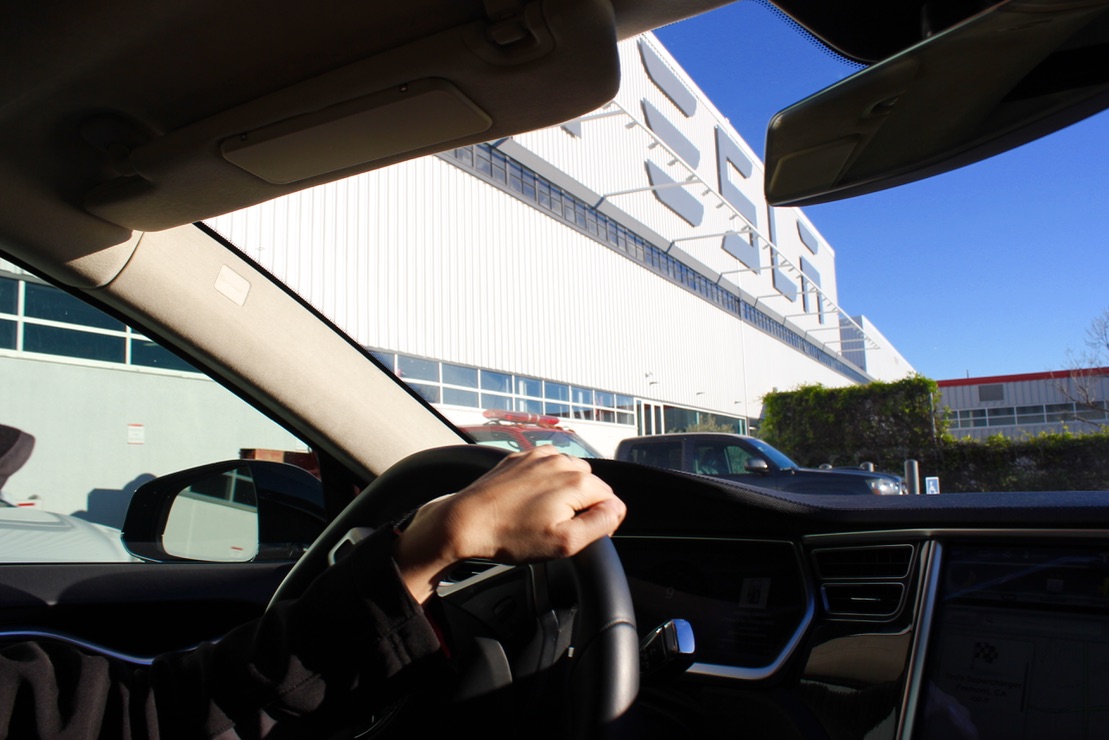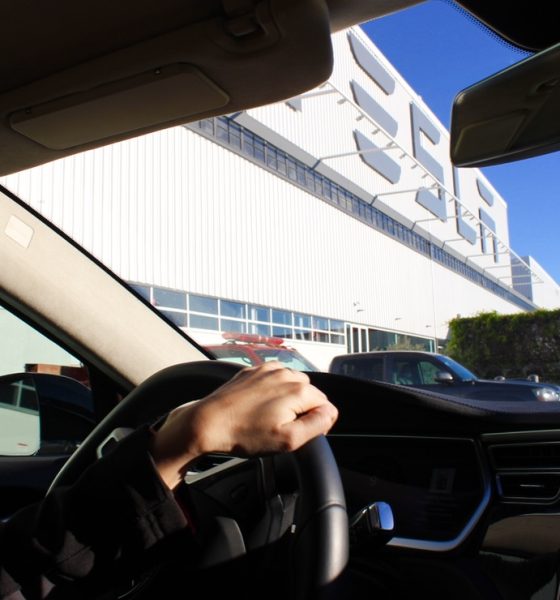

News
Tesla will replace 2012 Model S passenger airbags following Takata recall
Tesla sent an email to Model S owners on Tuesday notifying customers that an industry-wide recall made by airbag maker, Takata, will affect passenger airbags on the 2012 Model S. The notification indicates that the recall only affected 2012 Model S vehicles located in areas of the United States subject to high humidity, however Tesla will be replacing passenger airbags worldwide on Model S vehicles produced during that year as a precautionary measure.
Tesla’s Roadster, Model X and Model S produced between 2013 and late 2016 will not be impacted by the Takata airbag recall. However, the Silicon Valley electric car maker points out that “Model S vehicles produced through late 2016 are expected to eventually be recalled” but owners need not take any action now, until further notice from Tesla.
We’ve provided the recall announcement made by Tesla in its entirety below.
As part of a recent expansion of the industry-wide recall of Takata airbag inflators, the passenger airbags in certain 2012 Model S vehicles are now affected by the recall, and Tesla will be replacing them. Although the Takata recall currently only applies to 2012 Model S vehicles located in regions of the United States designated as high humidity, Tesla will replace the passenger airbags in all 2012 Model S vehicles globally. The safety of our customers is paramount and Tesla is taking this action even though there have been no airbag ruptures or other related incidents in any of its vehicles.
If you own a 2012 Model S vehicle, Tesla will contact you to schedule your replacement service. At this time there is no immediate action that you need to take.
As with the tens of millions of other vehicles with Takata airbags, this recall is taking place according to the schedule determined by the United States National Highway Traffic Safety Administration (NHTSA). Tesla intends to follow the same schedule for replacements in other countries as well – even where local regulators have not required a recall. This schedule ensures that customers will have sufficient time to replace recalled airbags before they present a risk to safety, due to the fact that the inflators only become defective based on a number of different factors, including their age.
Although the current recall only applies to 2012 Model S vehicles, the passenger airbags of all Model S vehicles produced through late 2016 are expected to eventually be recalled. If you own a Model S produced between 2013 and 2016, your airbags are safe, and you do not need to take any action until you receive further notice from Tesla. As noted by NHTSA, customers do not need to be concerned about Takata inflators before they receive a recall notice. Nevertheless, for convenience and peace of mind, Tesla will make every effort to proactively replace the airbags of all affected vehicles even before they are recalled. This will be performed as parts supply allows, and at this time you do not need to take any action.
The recalls will not affect any Tesla vehicles currently being produced, Model S vehicles that were produced after late 2016, or any Tesla Roadster or Model X vehicles. These vehicles do not have the type of airbag inflator that is subject to the recall.
For more information, FAQs, and other details related to this recall, please visit the Recall Information page. If you need additional assistance, you can also contact us by phone at (877) 798‑3752 or by email at ServiceHelpNA@tesla.com.
Thank you for being a Tesla customer and working with us to ensure your safety. We apologize for any inconvenience.

News
Tesla FSD fleet is nearing 7 billion total miles, including 2.5 billion city miles
As can be seen on Tesla’s official FSD webpage, vehicles equipped with the system have now navigated over 6.99 billion miles.

Tesla’s Full Self-Driving (Supervised) fleet is closing in on almost 7 billion total miles driven, as per data posted by the company on its official FSD webpage.
These figures hint at the massive scale of data fueling Tesla’s rapid FSD improvements, which have been quite notable as of late.
FSD mileage milestones
As can be seen on Tesla’s official FSD webpage, vehicles equipped with the system have now navigated over 6.99 billion miles. Tesla owner and avid FSD tester Whole Mars Catalog also shared a screenshot indicating that from the nearly 7 billion miles traveled by the FSD fleet, more than 2.5 billion miles were driven inside cities.
City miles are particularly valuable for complex urban scenarios like unprotected turns, pedestrian interactions, and traffic lights. This is also the difference-maker for FSD, as only complex solutions, such as Waymo’s self-driving taxis, operate similarly on inner-city streets. And even then, incidents such as the San Francisco blackouts have proven challenging for sensor-rich vehicles like Waymos.
Tesla’s data edge
Tesla has a number of advantages in the autonomous vehicle sector, one of which is the size of its fleet and the number of vehicles training FSD on real-world roads. Tesla’s nearly 7 billion FSD miles then allow the company to roll out updates that make its vehicles behave like they are being driven by experienced drivers, even if they are operating on their own.
So notable are Tesla’s improvements to FSD that NVIDIA Director of Robotics Jim Fan, after experiencing FSD v14, noted that the system is the first AI that passes what he described as a “Physical Turing Test.”
“Despite knowing exactly how robot learning works, I still find it magical watching the steering wheel turn by itself. First it feels surreal, next it becomes routine. Then, like the smartphone, taking it away actively hurts. This is how humanity gets rewired and glued to god-like technologies,” Fan wrote in a post on X.
News
Tesla starts showing how FSD will change lives in Europe
Local officials tested the system on narrow country roads and were impressed by FSD’s smooth, human-like driving, with some calling the service a game-changer for everyday life in areas that are far from urban centers.

Tesla has launched Europe’s first public shuttle service using Full Self-Driving (Supervised) in the rural Eifelkreis Bitburg-Prüm region of Germany, demonstrating how the technology can restore independence and mobility for people who struggle with limited transport options.
Local officials tested the system on narrow country roads and were impressed by FSD’s smooth, human-like driving, with some calling the service a game-changer for everyday life in areas that are far from urban centers.
Officials see real impact on rural residents
Arzfeld Mayor Johannes Kuhl and District Administrator Andreas Kruppert personally tested the Tesla shuttle service. This allowed them to see just how well FSD navigated winding lanes and rural roads confidently. Kruppert said, “Autonomous driving sounds like science fiction to many, but we simply see here that it works totally well in rural regions too.” Kuhl, for his part, also noted that FSD “feels like a very experienced driver.”
The pilot complements the area’s “Citizen Bus” program, which provides on-demand rides for elderly residents who can no longer drive themselves. Tesla Europe shared a video of a demonstration of the service, highlighting how FSD gives people their freedom back, even in places where public transport is not as prevalent.
What the Ministry for Economic Affairs and Transport says
Rhineland-Palatinate’s Minister Daniela Schmitt supported the project, praising the collaboration that made this “first of its kind in Europe” possible. As per the ministry, the rural rollout for the service shows FSD’s potential beyond major cities, and it delivers tangible benefits like grocery runs, doctor visits, and social connections for isolated residents.
“Reliable and flexible mobility is especially vital in rural areas. With the launch of a shuttle service using self-driving vehicles (FSD supervised) by Tesla in the Eifelkreis Bitburg-Prüm, an innovative pilot project is now getting underway that complements local community bus services. It is the first project of its kind in Europe.
“The result is a real gain for rural mobility: greater accessibility, more flexibility and tangible benefits for everyday life. A strong signal for innovation, cooperation and future-oriented mobility beyond urban centers,” the ministry wrote in a LinkedIn post.
News
Tesla China quietly posts Robotaxi-related job listing
Tesla China is currently seeking a Low Voltage Electrical Engineer to work on circuit board design for the company’s autonomous vehicles.

Tesla has posted a new job listing in Shanghai explicitly tied to its Robotaxi program, fueling speculation that the company is preparing to launch its dedicated autonomous ride-hailing service in China.
As noted in the listing, Tesla China is currently seeking a Low Voltage Electrical Engineer to work on circuit board design for the company’s autonomous vehicles.
Robotaxi-specific role
The listing, which was shared on social media platform X by industry watcher @tslaming, suggested that Tesla China is looking to fill the role urgently. The job listing itself specifically mentions that the person hired for the role will be working on the Low Voltage Hardware team, which would design the circuit boards that would serve as the nervous system of the Robotaxi.
Key tasks for the role, as indicated in the job listing, include collaboration with PCB layout, firmware, mechanical, program management, and validation teams, among other responsibilities. The role is based in Shanghai.
China Robotaxi launch
China represents a massive potential market for robotaxis, with its dense urban centers and supportive policies in select cities. Tesla has limited permission to roll out FSD in the country, though despite this, its vehicles have been hailed as among the best in the market when it comes to autonomous features. So far, at least, it appears that China supports Tesla’s FSD and Robotaxi rollout.
This was hinted at in November, when Tesla brought the Cybercab to the 8th China International Import Expo (CIIE) in Shanghai, marking the first time that the autonomous two-seater was brought to the Asia-Pacific region. The vehicle, despite not having a release date in China, received a significant amount of interest among the event’s attendees.








